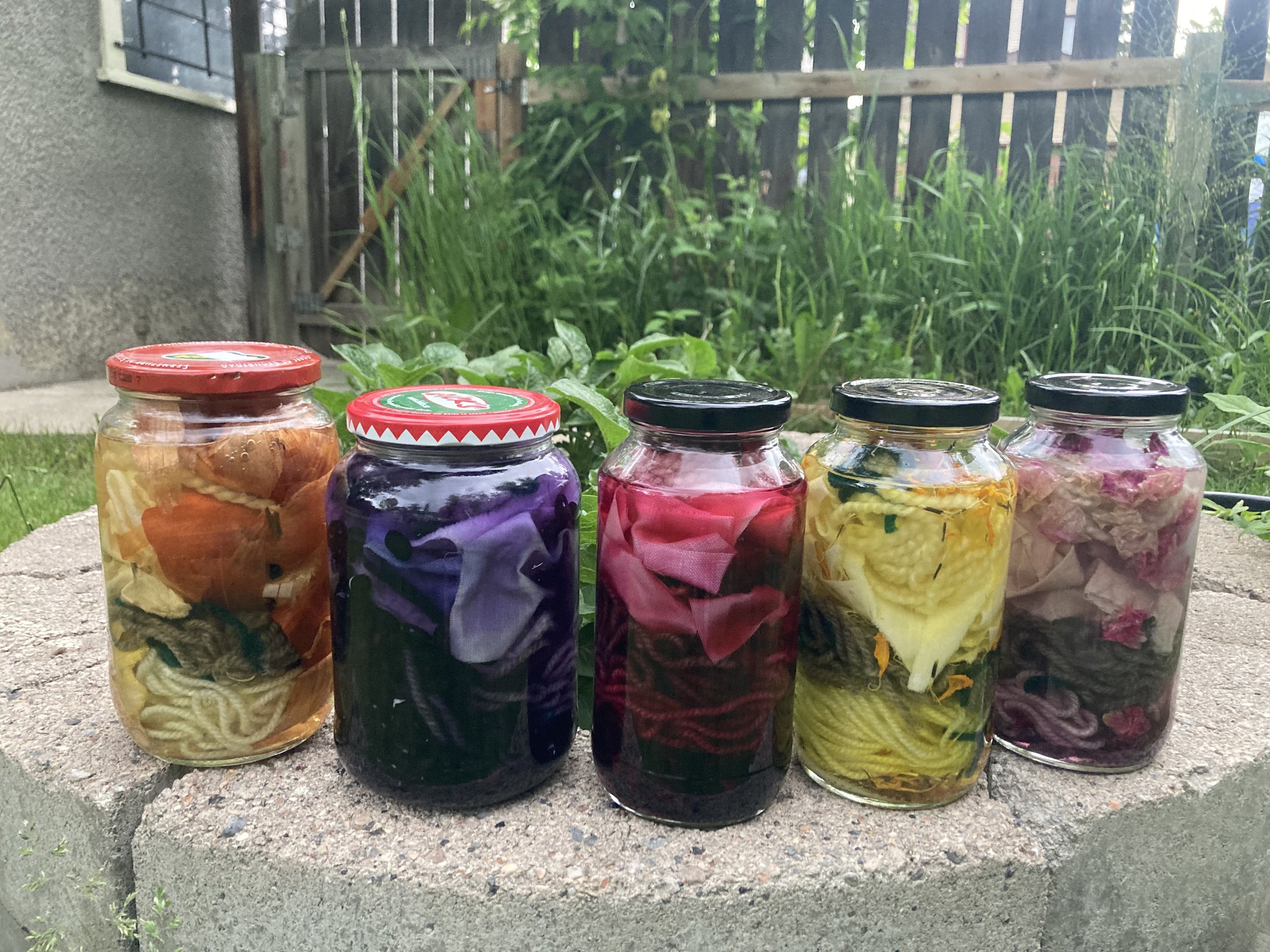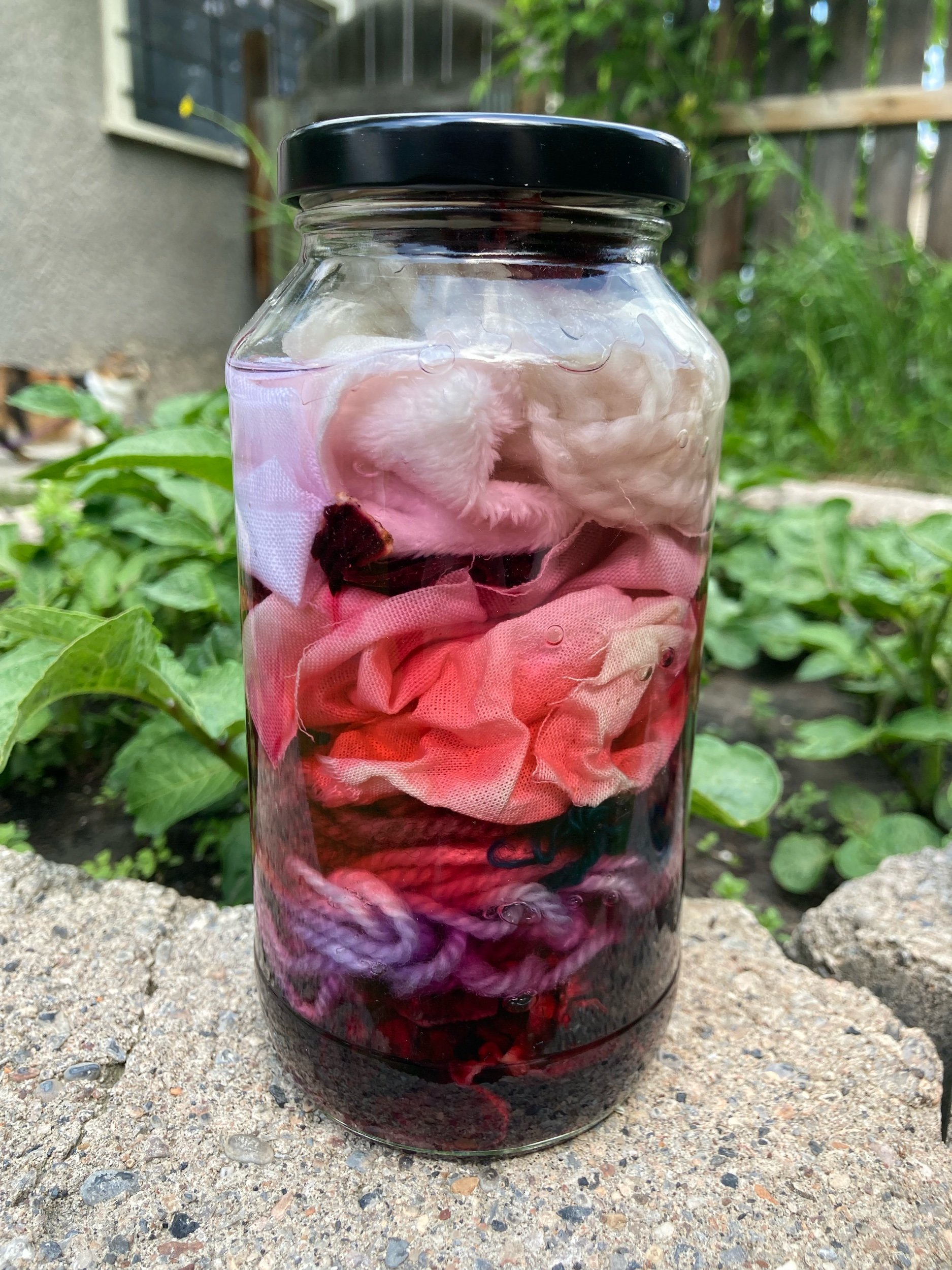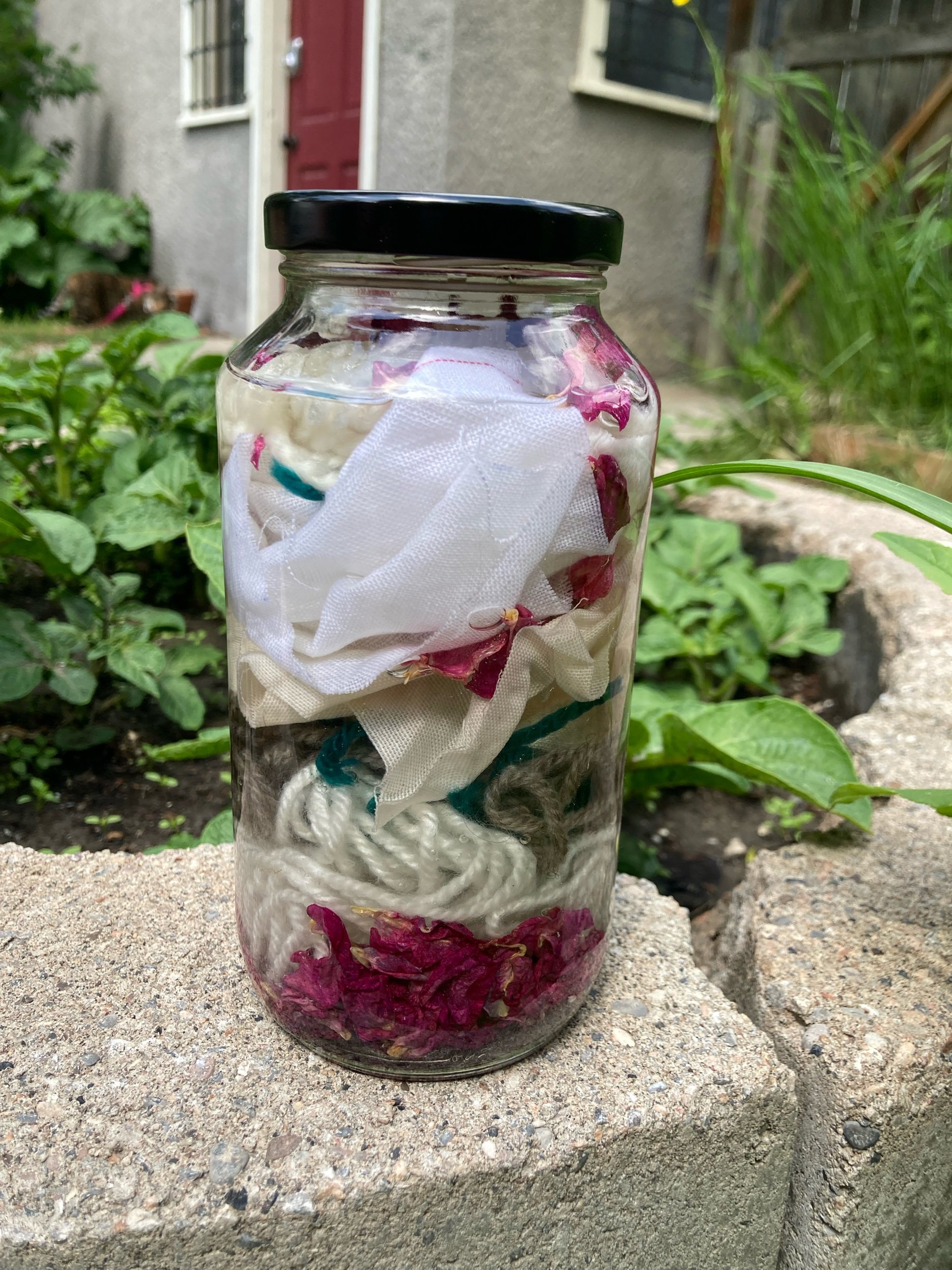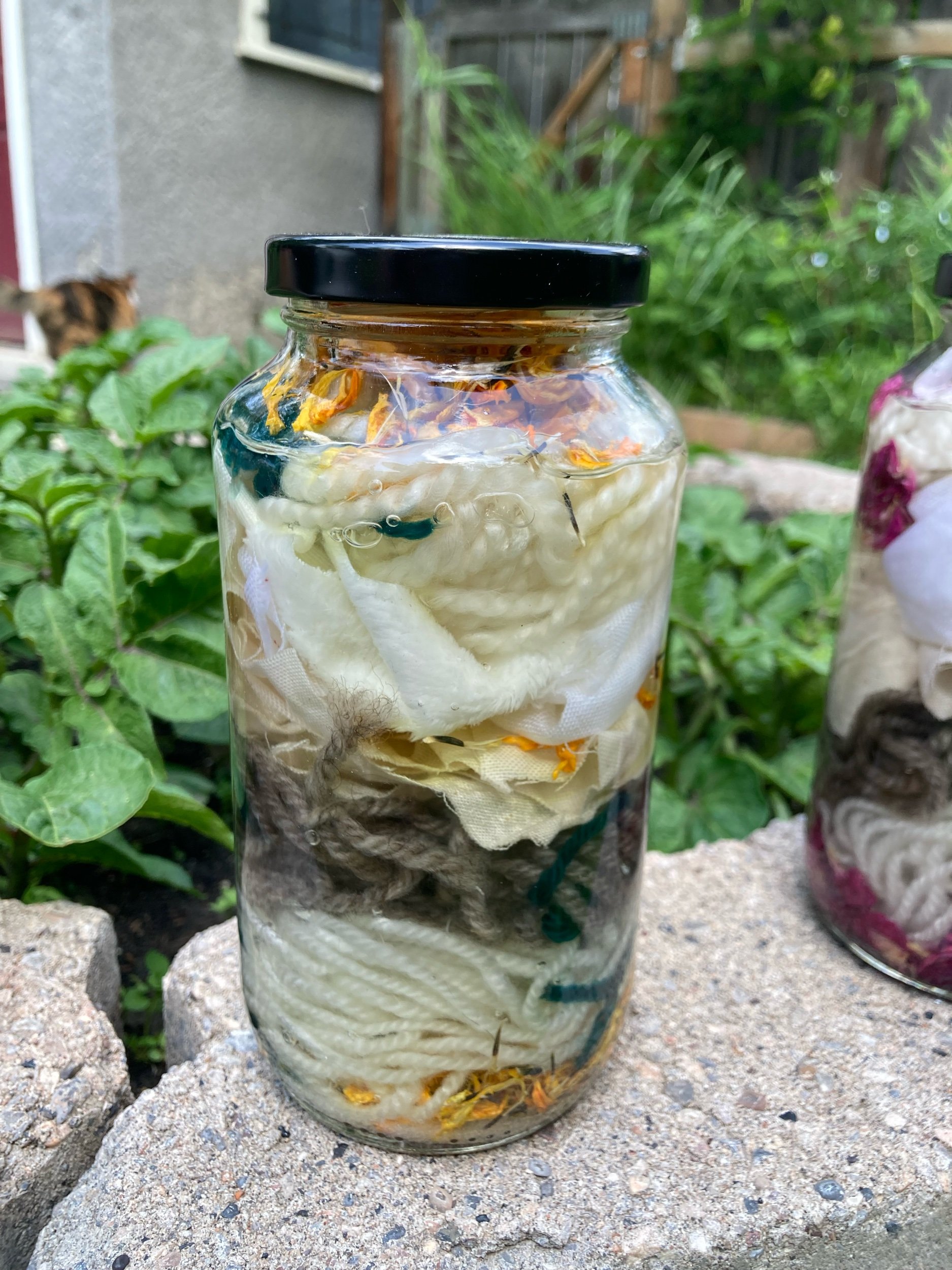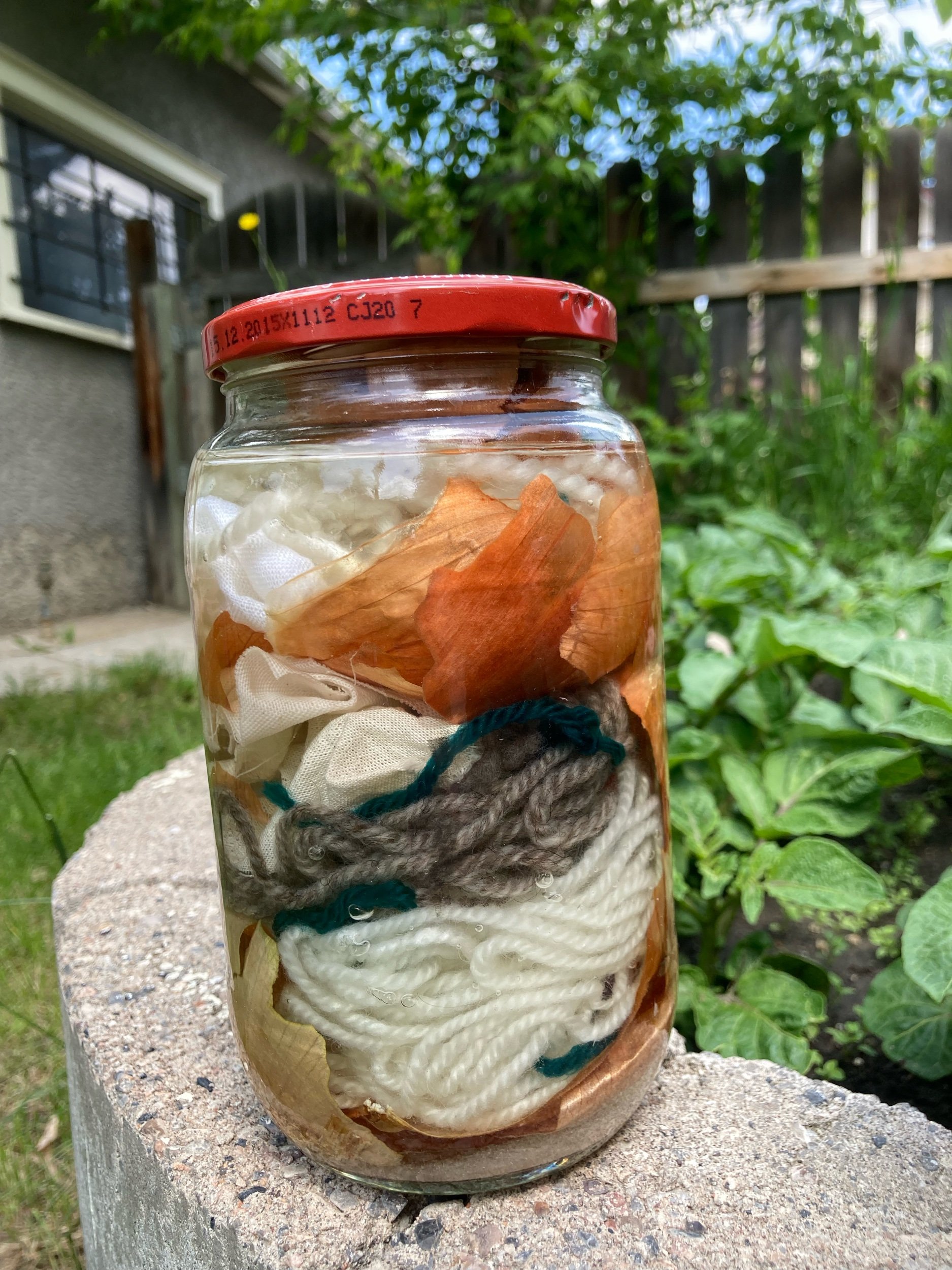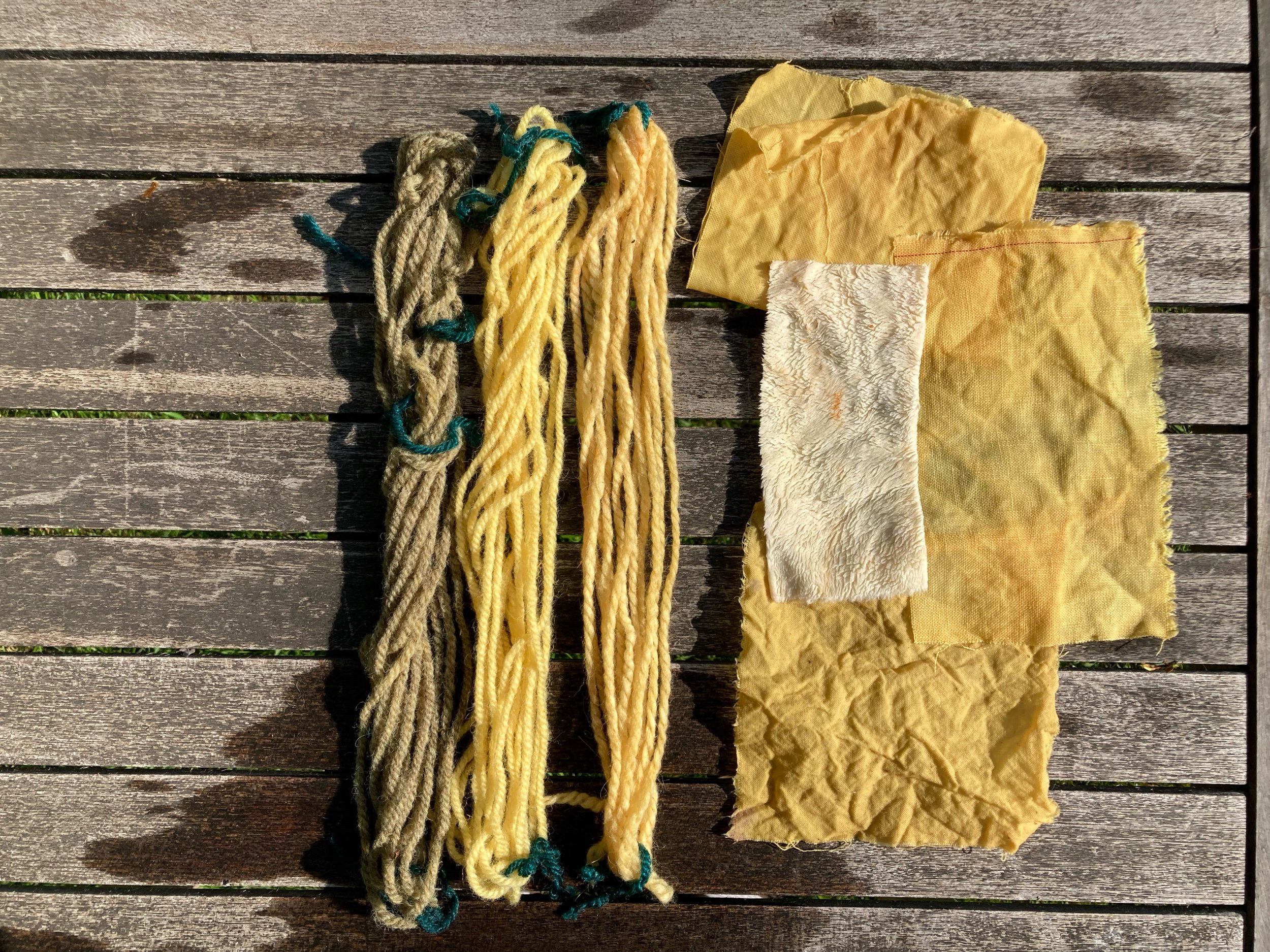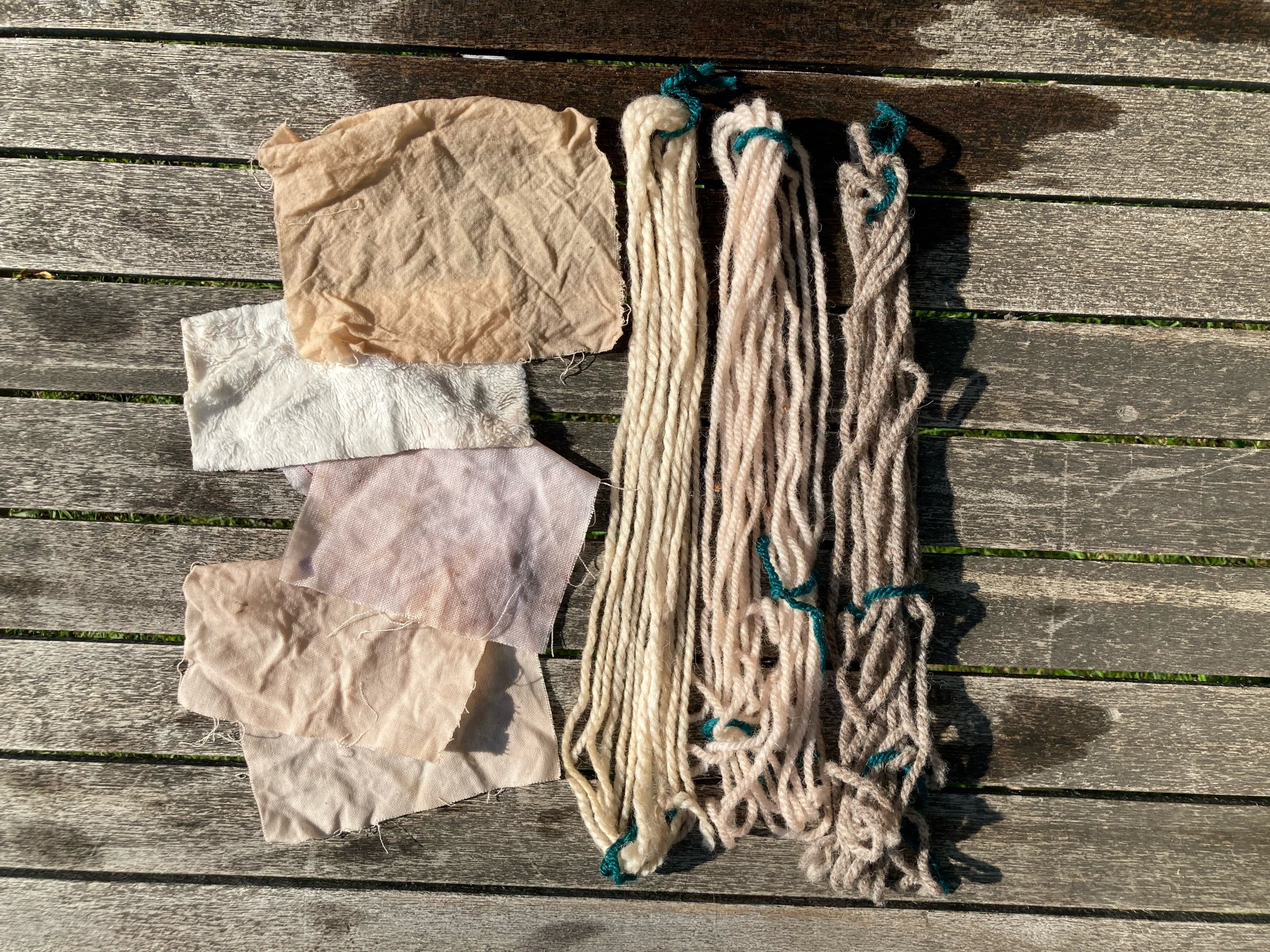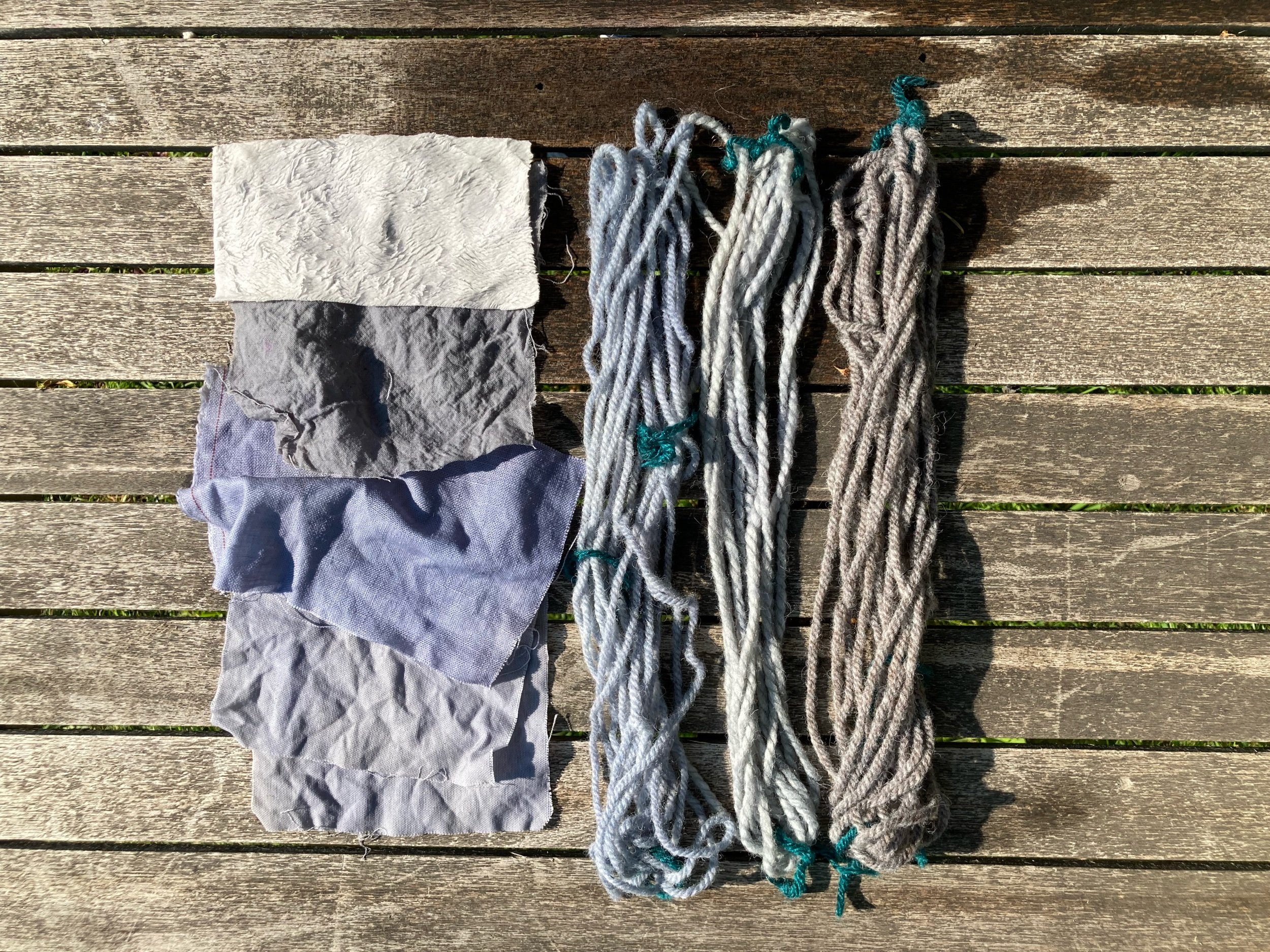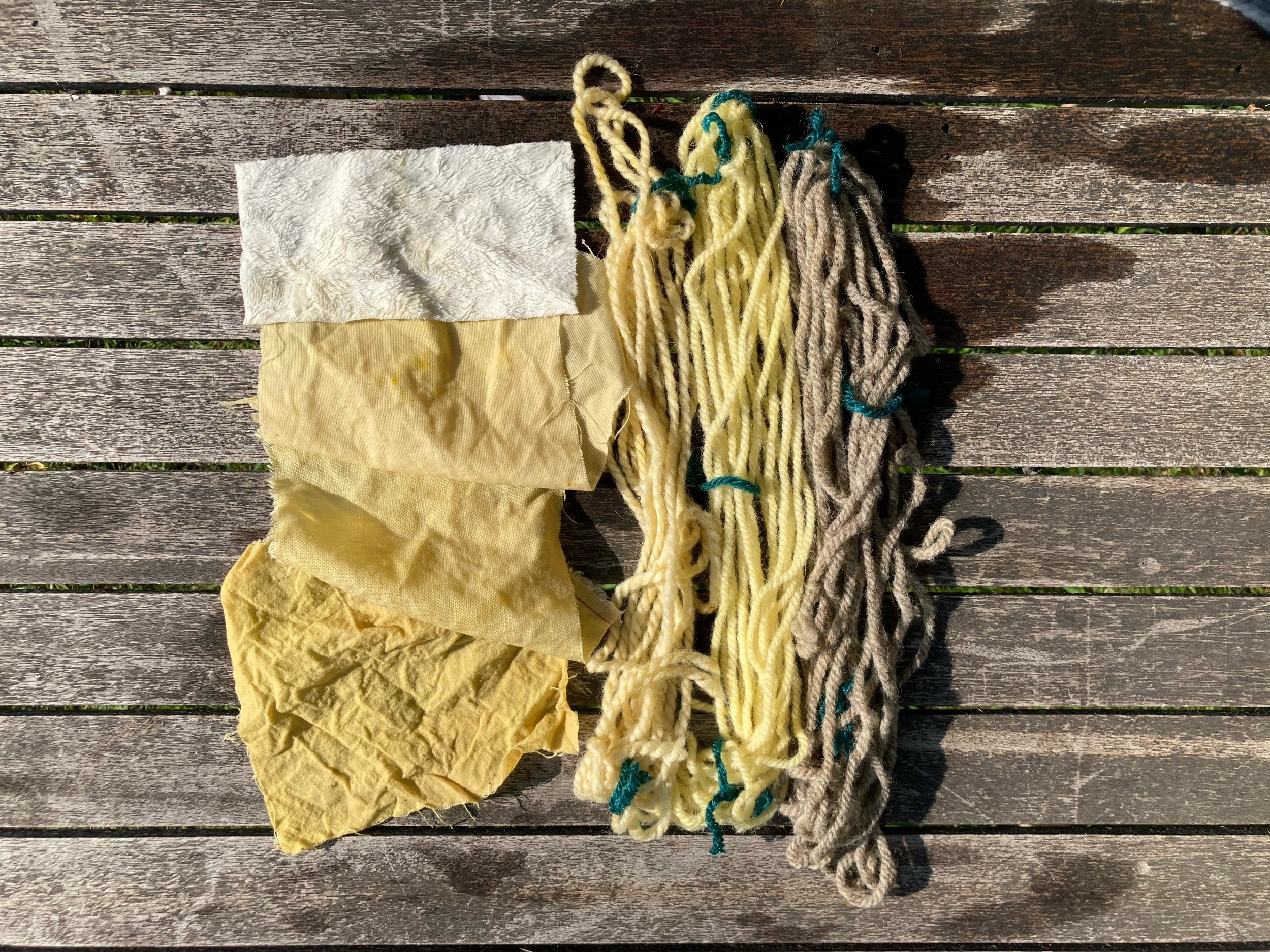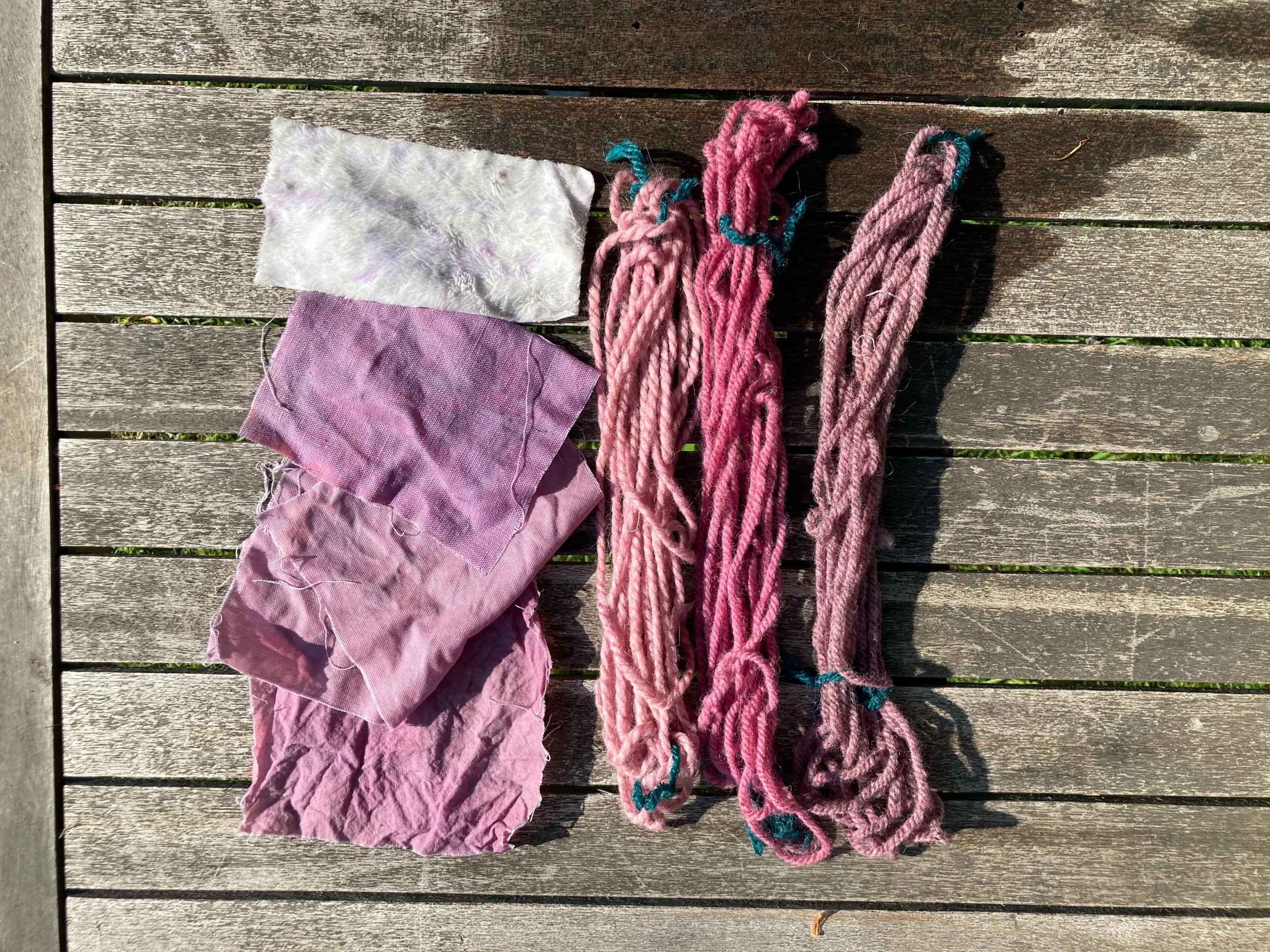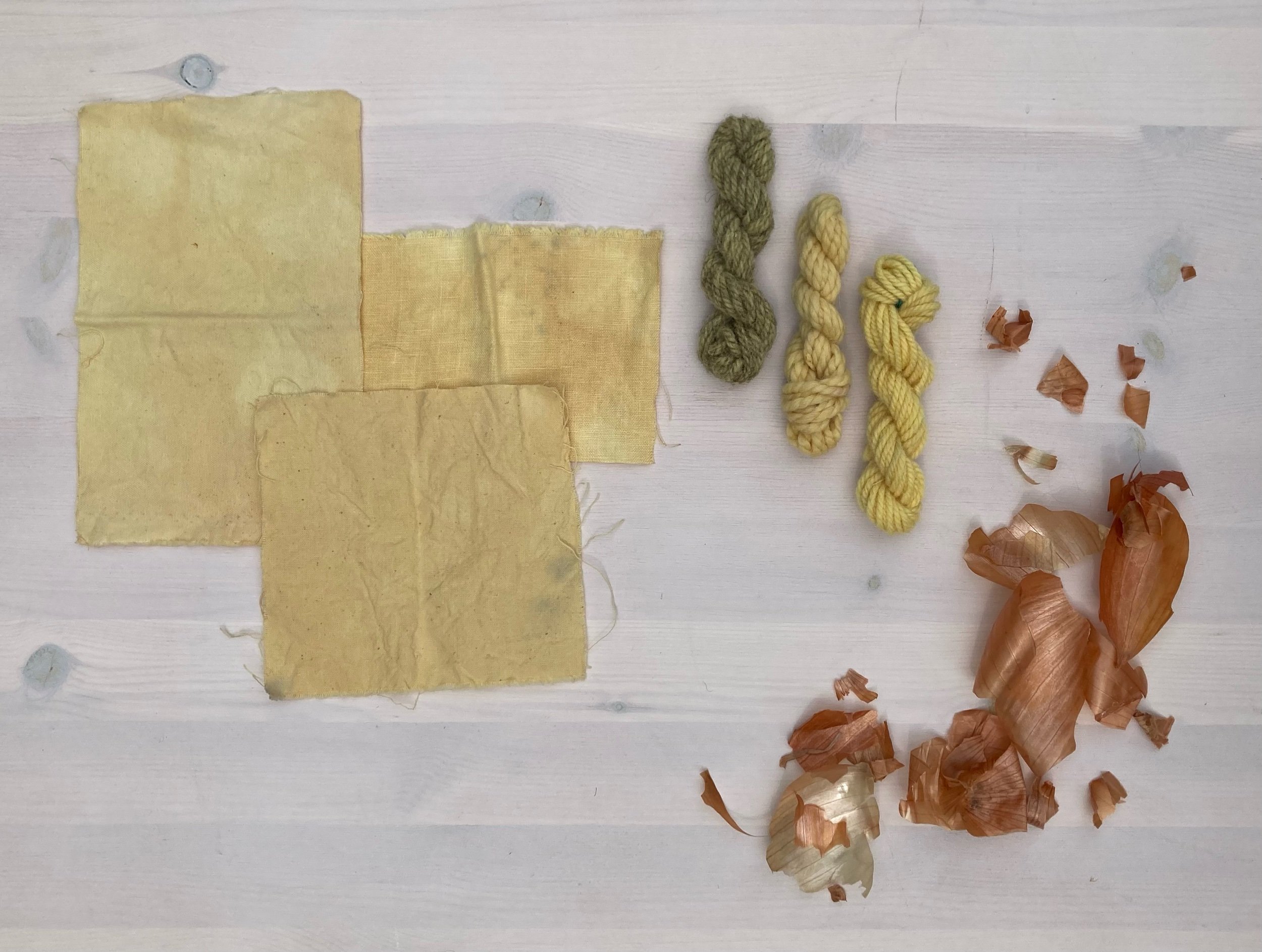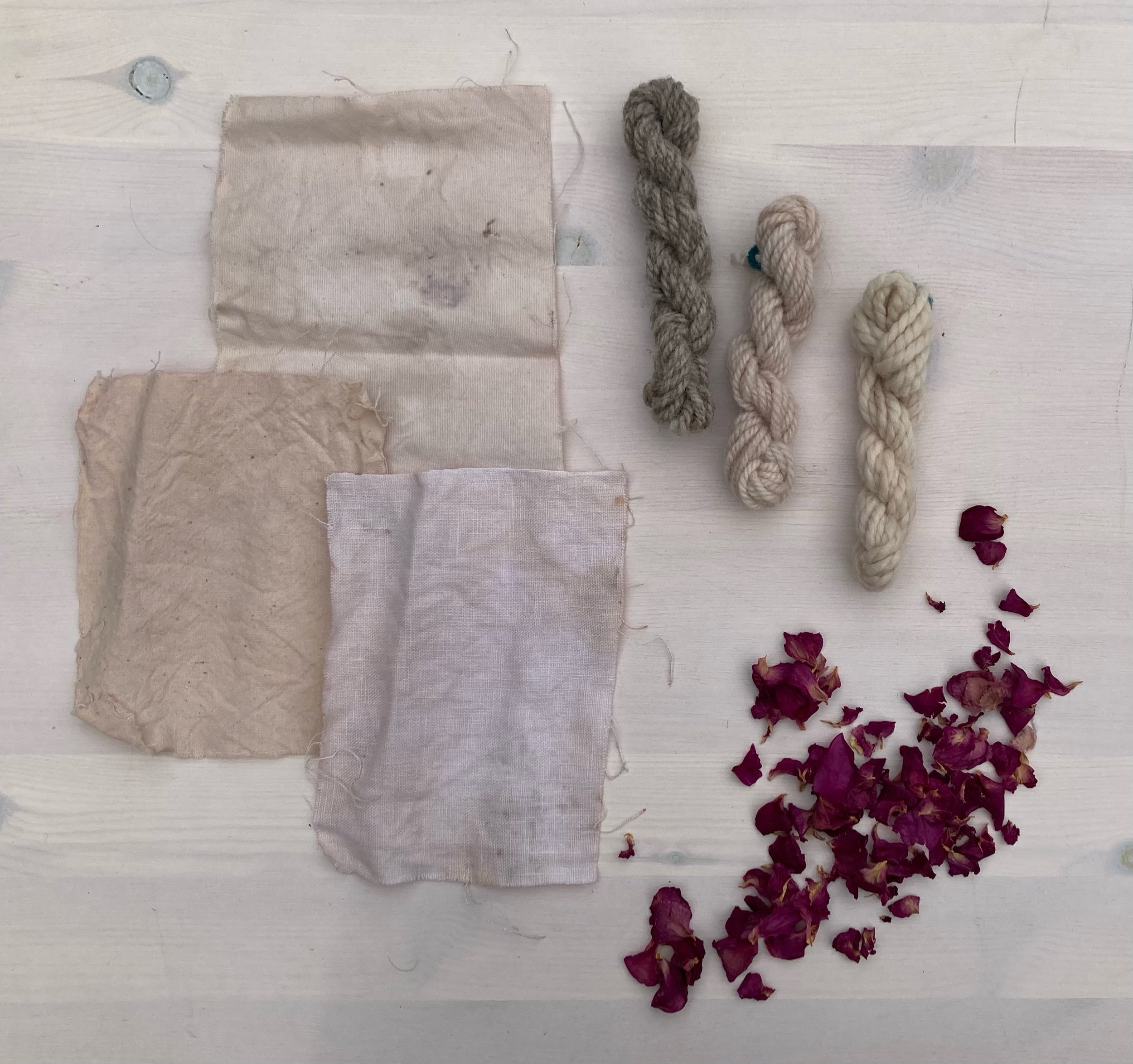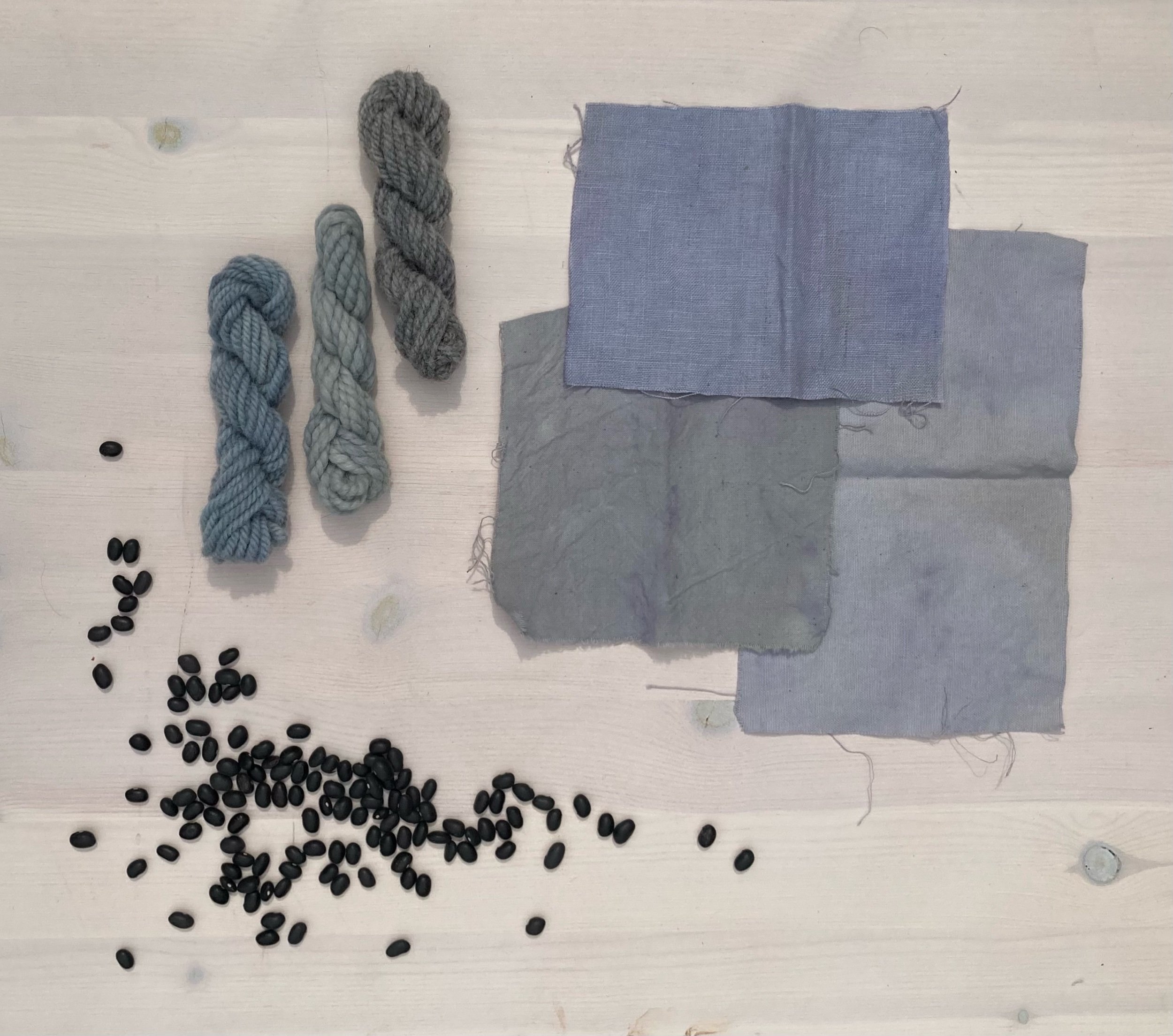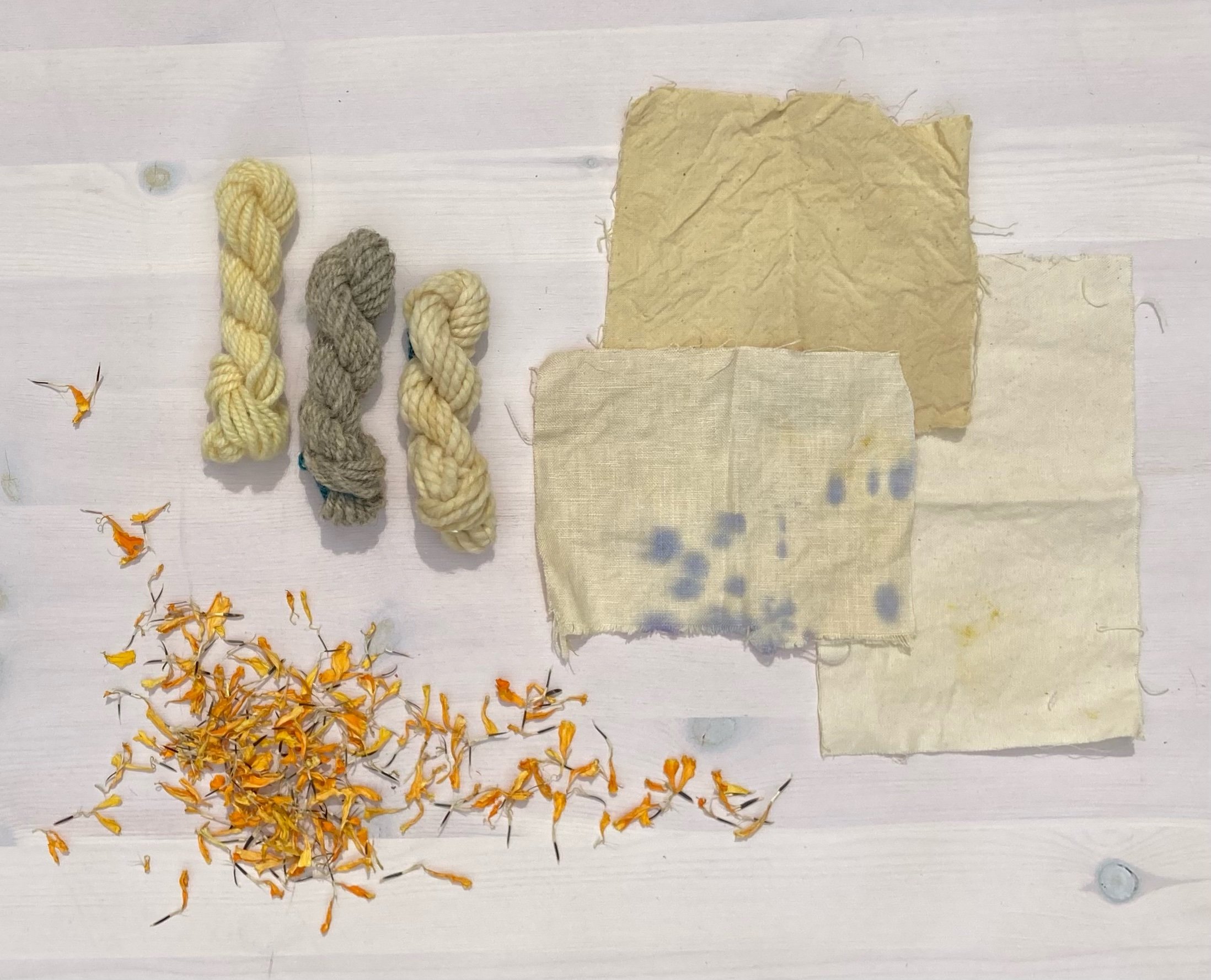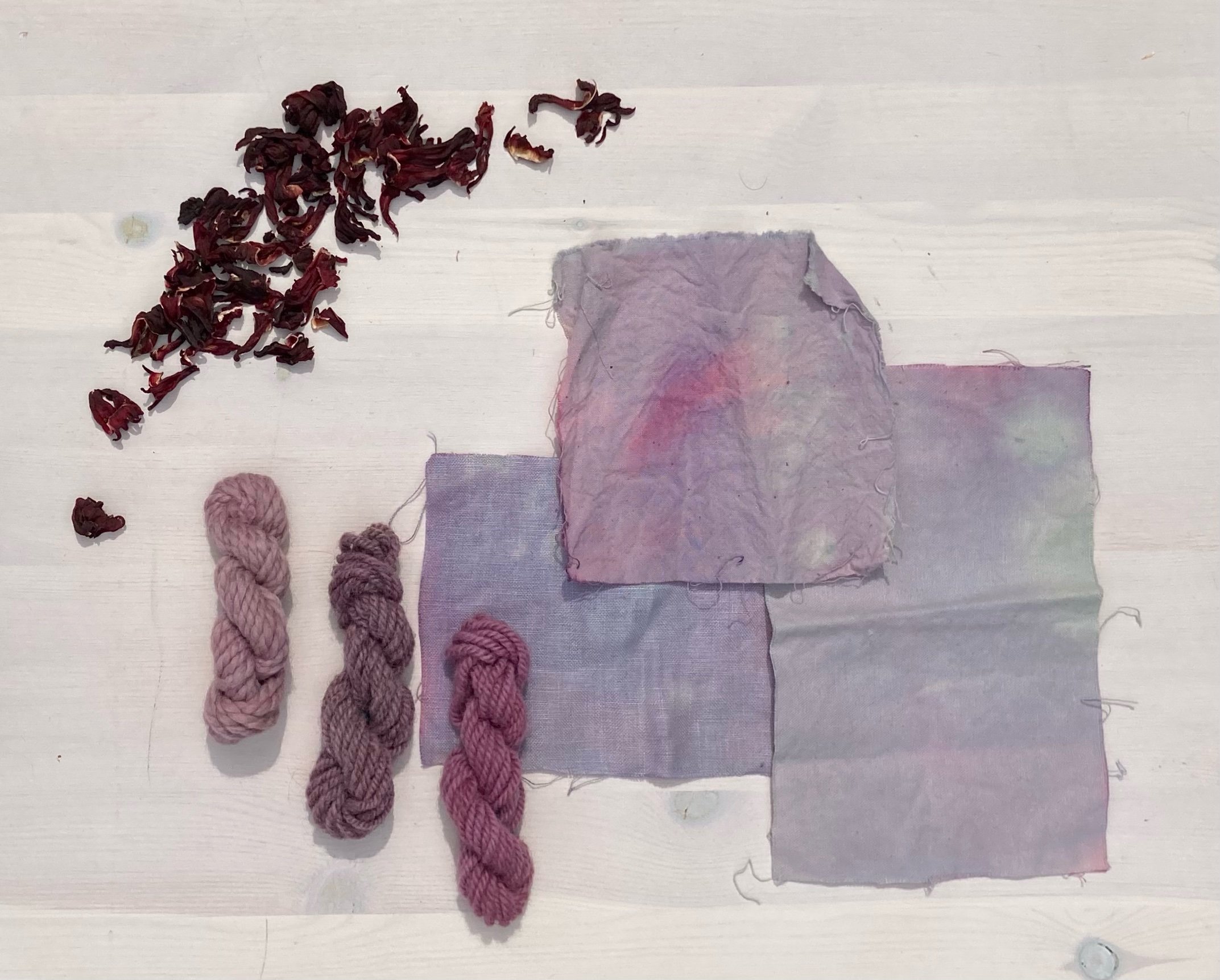Solar Dyes Research
Solar dyes soaking up the sun’s rays
For years I have been dreaming of solar dyes that I have seen on pinterest. I love using natural dyes, but having a pot simmering in my warm house makes me avoid dyeing in the summer months.
I started researching the process so I could attempt my own solar dyes. It uses the same principals as regular solar dyes. Natural dyes must be done on natural fibers from plants or animals. Next you prep by scouring the fiber; a cleaning process which strips the fibers of oils and dirt from its processing. Next, a mordant is needed, which is a material that binds the colour from the dye stuffs with the cloth. The final ingredients are dye material and heat.
I began by scouring the fibers. I chose a varied type of cloth; cotton, hemp and linen. I also divided some skeins of unbleached wool, bleached wool and alpaca yarn.
Usually in natural dyes, I would next do an immersion bath with the mordant (usually alum) to allow the fibers to bond with the dyes. During research I found various people who had simply added the alum in with the dye bath inside the jars. I decided to try my hand at this and save a step.
Next I added my dyes to the jars. This is where it gets really exciting for me. You can use a lot of things as natural dyes- some of them adhere better, some don’t stay in the cloth very long, and some really don’t add much colour at all. There are a lot of obvious choices here of tried and true dyes like logwood, marigold or cochineal that would ensure a strong colour that sticks around. I find the less obvious choices more intriguing. I have seen good success with a lot of food scraps like onion skins, and some experiments with carrot tops or lilac flowers.
I had to put on my blinders and choose only a few dyes. I gathered some dried hibiscus, black beans, marigold flowers, onion skins, and rose petals. I was more sure of some of the colours than others- but decided to go for it. In my five jars I added the dyes which I didn’t measure, but added by eye. I then added a tsp of alum for mordant, and dissolved this in some warm water to start off.
After the mordant had dissolved I added the fibers. On top I added a few more petals or skins on top to make sure it was well dispersed around the yarns and cloth. I filled the water to the top and closed the lid.
After a good shake to distribute the alum, I left the jars in the sun and resolved to leave them for a minimum of 2 weeks. The stove top heat used to bond dye to mordant to fiber in conventional natural dyes is replaced with the radiant heat of sunlight. I went and checked on them once a day and shook them to mix the water, and took of the lid to avoid any excess pressure from building up.
Four weeks later-Presto! We have dyed fibers!
The final dye result: from left to right, Onion skins, rose petals, black beans, marigold, hibiscus.
The results from the experiment have really got me excited to do it again! I love the way the black beans left a blue hue, and I am going to have to see if the colour is fugitive- that is whether it stays around or fades with time and light exposure. I also love the hibiscus and can’t wait to dye a larger cloth with it. Onion skins are an old faithful whose bright yellow I love.
The black beans were potent enough to leave colour in the droplets I made while wringing it out- that then transferred to my marigold swatch. I wasn’t expecting the colour to be so strong that it would effect the other samples!

